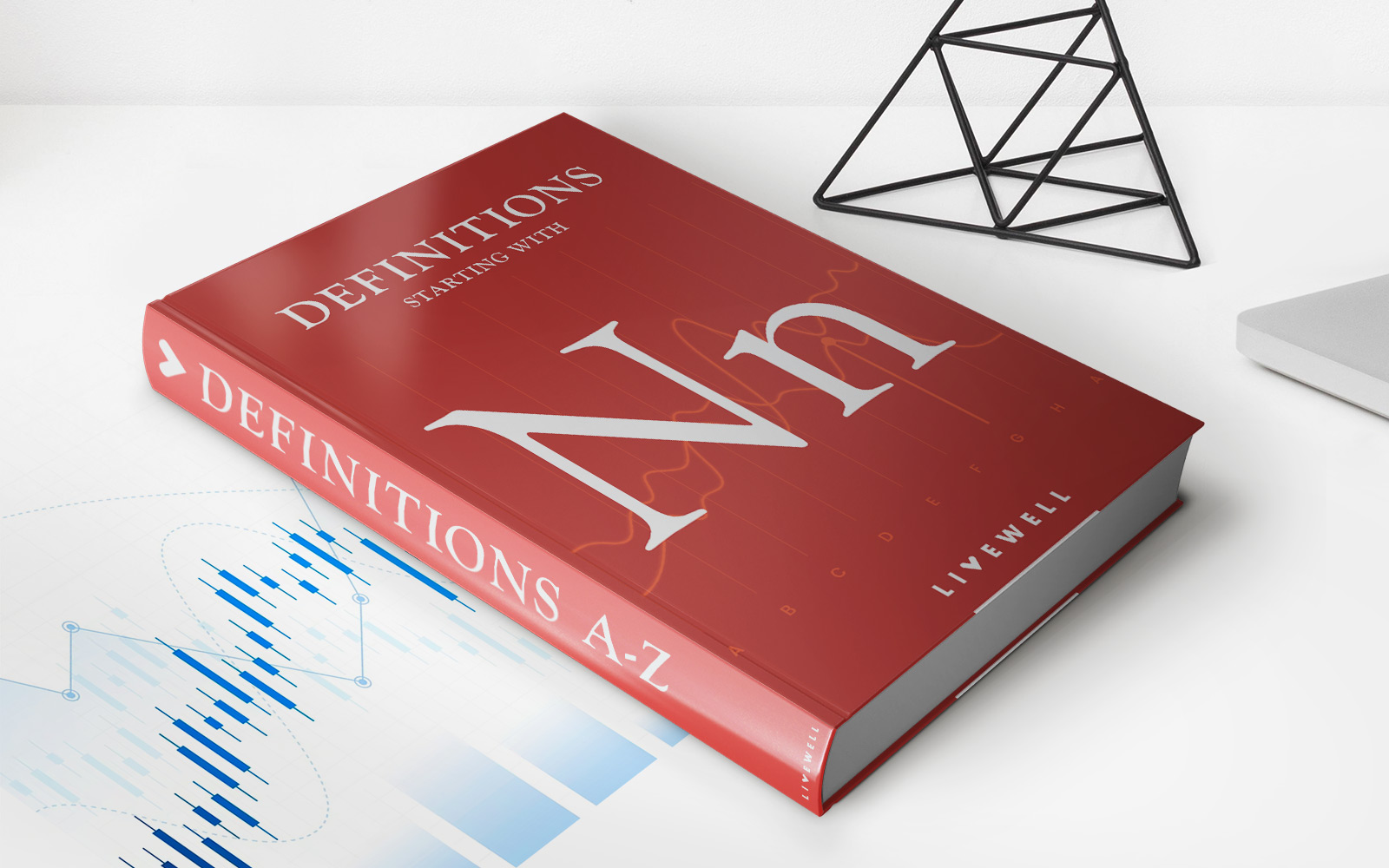

Finance
How To Account For Mergers And Acquisitions
Published: February 24, 2024
Learn how to account for mergers and acquisitions in finance with expert guidance. Understand the financial implications and reporting requirements for successful integration.
(Many of the links in this article redirect to a specific reviewed product. Your purchase of these products through affiliate links helps to generate commission for LiveWell, at no extra cost. Learn more)
Table of Contents
Introduction
Understanding Mergers and Acquisitions
Mergers and acquisitions (M&A) are pivotal events in the corporate world, often shaping the landscape of industries and markets. These strategic transactions involve the consolidation of companies, either through a merger, where two entities combine to form a new company, or an acquisition, where one company purchases another. The primary motivations behind M&A activities include achieving synergies, expanding market share, accessing new technologies or capabilities, and driving efficiency through economies of scale.
The realm of M&A encompasses a diverse array of activities, ranging from small-scale acquisitions to large-scale mergers that redefine the competitive dynamics of entire industries. As such, understanding the intricacies of M&A and their implications is essential for professionals across various domains, including finance, accounting, and business management.
In the subsequent sections, we will delve into the nuances of accounting for mergers and acquisitions, exploring the methods, financial reporting requirements, and the associated challenges. By gaining insights into these aspects, individuals can develop a comprehensive understanding of the financial implications of M&A transactions and the corresponding accounting practices. This knowledge is invaluable for stakeholders, including investors, analysts, and corporate decision-makers, as it enables them to evaluate the financial impact of M&A activities and make informed strategic decisions.
Understanding Mergers and Acquisitions
Mergers and acquisitions (M&A) are transformative processes that reshape the business landscape. In a merger, two companies combine their operations to form a new entity, thereby consolidating their resources, customer base, and market presence. On the other hand, an acquisition involves one company purchasing another, leading to the integration of the acquired company’s operations into the acquiring company’s business.
These strategic transactions are driven by various motives, such as gaining a competitive edge, expanding into new markets, diversifying product offerings, and achieving cost efficiencies. M&A activities can also facilitate access to intellectual property, talent, and proprietary technologies, fostering innovation and enhancing overall business capabilities.
From a financial perspective, M&A transactions can significantly impact the balance sheets, income statements, and cash flows of the involved entities. Understanding the intricacies of M&A is crucial for stakeholders, as it enables them to comprehend the rationale behind these strategic moves and evaluate their potential impact on the financial performance and position of the companies involved.
Furthermore, the implications of M&A extend beyond the individual companies involved, influencing the competitive dynamics of entire industries and markets. By gaining insights into the motivations, mechanisms, and consequences of M&A, professionals can navigate the complexities of these transactions and harness their potential to drive growth, innovation, and value creation.
Accounting for Mergers and Acquisitions
Accounting for mergers and acquisitions (M&A) entails the comprehensive recording, valuation, and reporting of the financial aspects associated with these strategic transactions. The accounting process for M&A is intricate, involving the assessment of assets, liabilities, and equity of the entities involved, as well as the determination of the purchase price and the allocation of the acquired assets and liabilities.
One of the key aspects of accounting for M&A is the treatment of goodwill, which represents the premium paid for an acquired company above its net identifiable assets’ fair value. Goodwill is subject to periodic impairment tests to ascertain if its value has been eroded, potentially leading to write-downs that impact the acquirer’s financial statements.
Furthermore, the accounting treatment for M&A transactions varies based on the method of acquisition, such as purchase method or pooling of interests method. The purchase method is the most commonly used approach, where the acquiring company recognizes the acquired assets and liabilities at their fair values at the acquisition date. Conversely, the pooling of interests method, which was prevalent in the past, involves combining the financial statements of the merging entities as if they had always been a single entity.
Effective accounting for M&A transactions is essential for providing stakeholders with transparent and reliable financial information. It enables investors, regulators, and other users of financial statements to assess the impact of M&A on the financial position, performance, and cash flows of the involved entities. Additionally, sound accounting practices for M&A contribute to the accuracy and comparability of financial statements, supporting informed decision-making and fostering confidence in the financial reporting process.
Methods of Accounting for Mergers and Acquisitions
When it comes to accounting for mergers and acquisitions (M&A), several methods are employed to record and report the financial impact of these transformative transactions. The primary methods of accounting for M&A include the purchase method and the pooling of interests method, each with distinct implications for financial reporting and analysis.
Purchase Method: The purchase method is the prevailing approach for accounting for M&A transactions. Under this method, the acquiring company recognizes the acquired assets and liabilities at their fair values at the acquisition date. Any excess of the purchase price over the fair value of the net identifiable assets acquired is attributed to goodwill. Goodwill represents the intangible value of the acquired business, encompassing factors such as brand reputation, customer relationships, and proprietary technology. It is essential to note that goodwill is subject to periodic impairment tests, and any impairment results in a write-down that impacts the acquirer’s financial statements.
Pooling of Interests Method: Historically, the pooling of interests method was utilized for accounting for M&A transactions. This method involved combining the financial statements of the merging entities as if they had always been a single entity. However, due to changes in accounting standards and regulations, the pooling of interests method has become less common, and the purchase method is now the standard approach for accounting for M&A.
It is important to note that the choice of accounting method can significantly impact the reported financial results and financial ratios of the entities involved. The purchase method provides a more comprehensive and fair representation of the financial position and performance post-acquisition, as it reflects the fair values of the acquired assets and liabilities. On the other hand, the pooling of interests method, while simpler in terms of combining the financial statements, may not accurately portray the financial impact of the transaction.
By understanding the nuances of these accounting methods for M&A, stakeholders can interpret financial statements, assess the impact of M&A on the acquirer’s financial position, and make informed investment and strategic decisions based on transparent and reliable financial information.
Financial Reporting for Mergers and Acquisitions
Financial reporting for mergers and acquisitions (M&A) plays a crucial role in providing stakeholders with transparent and comprehensive insights into the financial impact of these transformative transactions. The reporting requirements for M&A transactions encompass the disclosure of pertinent information related to the acquisition, including the financial statements of the acquired company, the allocation of purchase price, and the treatment of goodwill.
Under the purchase method of accounting for M&A, the acquirer is mandated to present the acquired assets and assumed liabilities at their fair values in the post-acquisition financial statements. This approach facilitates a clear representation of the tangible and intangible assets acquired, enabling stakeholders to assess the financial position and potential synergies arising from the transaction.
Moreover, the allocation of the purchase price to the identifiable assets and liabilities acquired, as well as the determination of goodwill, must be meticulously disclosed in the financial statements. This transparency allows investors and analysts to understand the valuation process and the intangible value attributed to the acquired business, fostering informed assessments of the transaction’s impact on the acquirer’s financial performance and future prospects.
Additionally, the reporting of goodwill is pivotal in financial statements, as it reflects the premium paid for the acquired business and the potential for future economic benefits. The periodic impairment testing of goodwill and the corresponding write-downs, if any, are essential disclosures that signal the acquirer’s assessment of the acquired business’s long-term value and its alignment with the original projections made during the acquisition.
By adhering to the rigorous financial reporting standards and providing comprehensive disclosures related to M&A transactions, companies enhance the transparency and reliability of their financial statements. This, in turn, instills confidence in investors, creditors, and other stakeholders, enabling them to make well-informed decisions based on a thorough understanding of the financial implications and performance outcomes of M&A activities.
Challenges in Accounting for Mergers and Acquisitions
Accounting for mergers and acquisitions (M&A) presents a myriad of challenges, stemming from the complexity of valuing acquired assets, determining goodwill, and integrating the financial results of the acquired entity into the acquirer’s financial statements. These challenges require a nuanced understanding of accounting standards, valuation methodologies, and post-acquisition financial reporting, as well as the ability to navigate the intricacies of M&A transactions.
Valuation Complexity: One of the primary challenges in M&A accounting is the intricate process of valuing the acquired assets and liabilities at their fair values. This necessitates the application of robust valuation methodologies to assess intangible assets, contingent liabilities, and complex financial instruments, requiring specialized expertise and meticulous analysis.
Goodwill Assessment: The determination and subsequent testing of goodwill pose significant challenges in M&A accounting. Assessing the intangible value of the acquired business and conducting periodic impairment tests demand a thorough understanding of the acquired entity’s operations, market dynamics, and long-term growth prospects.
Financial Integration: Integrating the financial results of the acquired entity into the acquirer’s financial statements entails challenges related to aligning accounting policies, consolidating diverse operations, and reconciling intercompany transactions. This process demands meticulous attention to detail and a comprehensive understanding of consolidation principles and reporting requirements.
Regulatory Compliance: Adhering to evolving accounting standards and regulatory requirements adds another layer of complexity to M&A accounting. Companies engaging in M&A activities must navigate the dynamic regulatory landscape, ensuring compliance with reporting standards and disclosure mandates to provide transparent and reliable financial information to stakeholders.
Addressing these challenges requires a multidisciplinary approach, involving collaboration between accounting, finance, and legal professionals, as well as leveraging specialized expertise in valuation, financial reporting, and post-acquisition integration. By surmounting these challenges, companies can enhance the accuracy and transparency of their financial reporting for M&A transactions, instilling confidence in stakeholders and fostering a robust foundation for informed decision-making and strategic planning.
Conclusion
Mergers and acquisitions (M&A) are pivotal events that reshape the corporate landscape, driving strategic realignments, market expansions, and value creation. The accounting for M&A transactions is a multifaceted endeavor, encompassing the comprehensive recording, valuation, and reporting of the financial implications of these transformative activities. By delving into the nuances of M&A accounting, stakeholders gain valuable insights into the financial impact, reporting requirements, and associated challenges, enabling them to navigate these transactions with clarity and confidence.
Understanding the methods of accounting for M&A, such as the purchase method and the pooling of interests method, provides stakeholders with the tools to interpret financial statements, assess the impact of M&A on the acquirer’s financial position, and make informed investment and strategic decisions. Furthermore, the meticulous financial reporting for M&A transactions, including the disclosure of acquired assets, liabilities, and goodwill, fosters transparency and reliability, empowering stakeholders to evaluate the implications of these transactions on the financial performance and prospects of the involved entities.
Despite the complexities and challenges inherent in M&A accounting, including valuation intricacies, goodwill assessment, financial integration, and regulatory compliance, companies can navigate these hurdles by leveraging multidisciplinary expertise and robust accounting practices. By doing so, they can enhance the accuracy and transparency of their financial reporting, instilling confidence in investors, creditors, and other stakeholders and facilitating informed decision-making.
In conclusion, a comprehensive understanding of the accounting for mergers and acquisitions is indispensable for stakeholders across the corporate landscape, enabling them to unravel the financial intricacies, assess the implications, and leverage the opportunities presented by these transformative transactions. By embracing transparency, sound accounting practices, and a holistic approach to M&A accounting, companies can harness the potential of these strategic moves to drive growth, innovation, and sustainable value creation in the dynamic business environment.














